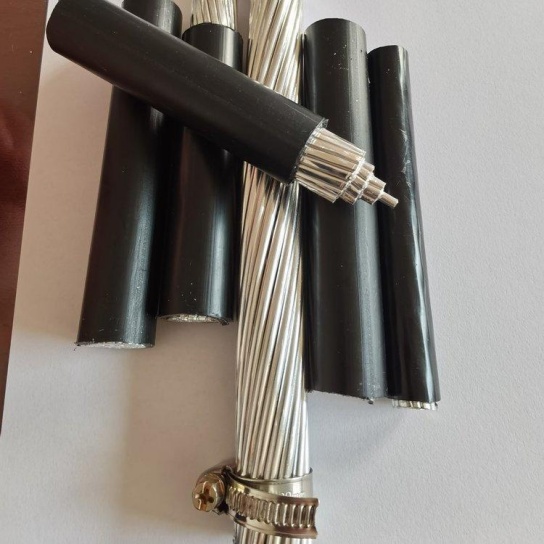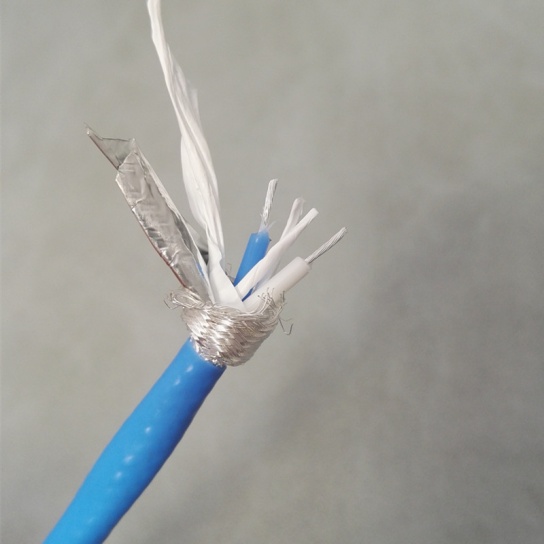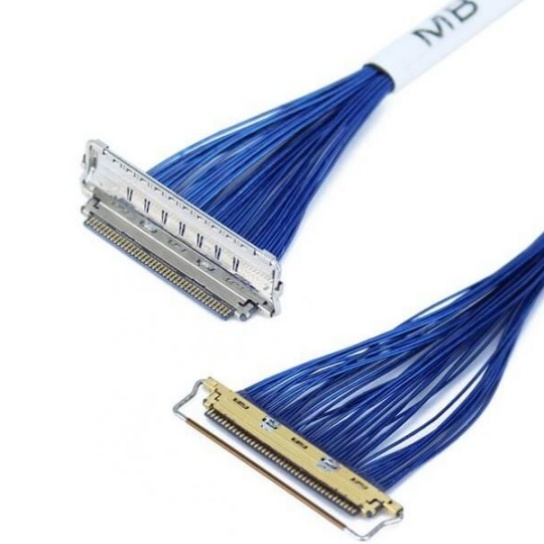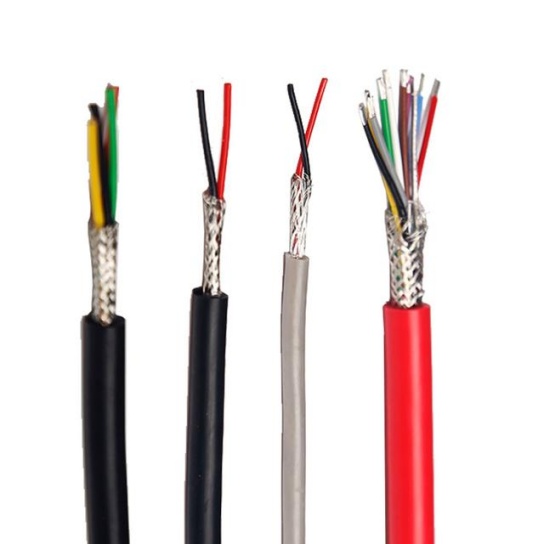Aircraft Cable Assemblies: The Impact of 5G on Their Development
In the complex ecosystem of aviation technology, Aircraft Cable Assemblies stand as an indispensable backbone, connecting critical systems from avionics and navigation to communication and power distribution. These assemblies—comprising insulated wires, connectors, shielding layers, and protective jackets—are not just passive transmitters of signals and electricity; they are vital to ensuring flight safety, operational efficiency, and the reliability of on-board systems. As the global aviation industry embraces the era of 5G technology, a wave of transformation is sweeping through every segment, and Aircraft Cable Assemblies are no exception. 5G’s ultra-high bandwidth, low latency, and massive device connectivity are redefining what aviation systems can achieve, and in turn, placing unprecedented demands on the performance, durability, and design of Aircraft Cable Assemblies. This article explores how 5G is reshaping the development of Aircraft Cable Assemblies, the technical challenges it poses, and the innovative solutions driving the next generation of these critical components.
1. The Evolving Role of Aircraft Cable Assemblies in the 5G-Powered Aviation Landscape
Before delving into 5G’s impact, it is essential to recognize the foundational role of Aircraft Cable Assemblies in aviation. For decades, these assemblies have facilitated the transfer of data and power between on-board systems: from flight control computers that manage altitude and speed to in-flight entertainment (IFE) systems that enhance passenger experience, and from engine monitoring sensors to ground communication links. In traditional aviation setups, data transfer needs were relatively modest—focused on basic flight parameters, voice communication, and limited IFE content. As a result, Aircraft Cable Assemblies were designed primarily to meet standards for durability (resisting vibration, temperature fluctuations, and chemical exposure) and basic signal integrity.
The arrival of 5G has upended this status quo. Unlike 4G, which focused on consumer mobile connectivity, 5G is a transformative technology for industrial sectors, including aviation. In commercial aviation, 5G enables real-time, high-volume data exchange between aircraft and ground operations, supports advanced IFE systems (such as 4K/8K video streaming and interactive applications), and powers predictive maintenance through IoT (Internet of Things) sensors. In military aviation, 5G enhances situational awareness by enabling seamless communication between fighter jets, drones, and command centers, as well as supporting AI-driven mission-critical systems. Even in general aviation, 5G is enabling smaller aircraft to access real-time weather data, traffic updates, and remote diagnostics.
Every one of these 5G-enabled applications relies on Aircraft Cable Assemblies to transmit data and power without interruption. For example, real-time engine monitoring requires cables that can carry high-frequency sensor data from the engine (a high-temperature, high-vibration environment) to the avionics suite with near-zero latency. In-flight 5G Wi-Fi, which allows passengers to stream content or work remotely, depends on cables that can handle ultra-high bandwidth signals between the aircraft’s external antennas and internal access points—all while resisting electromagnetic interference (EMI) from other on-board systems. Without advanced Aircraft Cable Assemblies capable of meeting these new demands, 5G’s potential in aviation remains untapped.
2. 5G-Driven Technical Demands: Raising the Bar for Aircraft Cable Assemblies
5G’s unique capabilities—ultra-reliable low latency communication (URLLC), enhanced mobile broadband (eMBB), and massive machine-type communications (mMTC)—translate to specific, stringent requirements for Aircraft Cable Assemblies. Below are the key technical areas where 5G is driving significant upgrades:
2.1 Ultra-High Bandwidth and Data Rate Support
eMBB, one of 5G’s core features, delivers peak data rates of up to 20 Gbps—far exceeding the capabilities of 4G. In aviation, this means Aircraft Cable Assemblies must handle data streams that are orders of magnitude larger than before. For instance, a 5G-enabled aircraft may need to transmit real-time high-resolution video from multiple on-board cameras (for security or engine monitoring) to ground stations, or distribute 4K/8K IFE content to hundreds of seats simultaneously.
Traditional Aircraft Cable Assemblies, designed for lower data rates (often in the megabit or low gigabit range), struggle to keep up. To address this, manufacturers are developing cables with optimized conductor designs and insulation materials. For example, using twisted-pair conductors with tighter twist ratios reduces signal crosstalk (a major limiting factor for high-bandwidth transmission), while advanced insulation materials like fluorinated ethylene propylene (FEP) or perfluoroalkoxy alkane (PFA) minimize signal attenuation (signal loss) at high frequencies. Additionally, some Aircraft Cable Assemblies now incorporate fiber optic elements alongside copper conductors—fiber optics offer virtually unlimited bandwidth and are ideal for long-distance, high-speed data transfer within the aircraft.
2.2 Low Latency and Signal Integrity
URLLC, another critical 5G feature, requires latency as low as 1 millisecond. In aviation, low latency is non-negotiable for safety-critical applications: for example, remote piloting of drones, real-time adjustment of flight control systems based on sensor data, or emergency communication between the aircraft and air traffic control (ATC). Even a small delay in data transmission could have catastrophic consequences.
Aircraft Cable Assemblies play a direct role in minimizing latency by ensuring signal integrity—the ability of a signal to reach its destination without distortion or delay. To achieve this, manufacturers are focusing on two key areas: reducing signal loss and eliminating EMI. EMI, which can come from other on-board systems (such as radar, engines, or other communication devices), disrupts signal transmission and increases latency. Modern Aircraft Cable Assemblies now use multi-layer shielding—combining materials like braided copper, aluminum foil, and conductive polymers—to block EMI. For example, a cable with a double-shield design (aluminum foil for low-frequency EMI and braided copper for high-frequency EMI) can reduce interference by up to 99%, ensuring that 5G signals reach their target with minimal delay.
2.3 Enhanced Durability for 5G’s Expanded System Integration
5G is not just about faster data—it also enables the integration of hundreds of new IoT sensors and devices on aircraft (mMTC). These sensors monitor everything from cabin pressure and temperature to the wear and tear of critical components like landing gear or turbine blades. Many of these sensors are placed in harsh environments: near engines (where temperatures can exceed 200°C), in the wings (exposed to extreme cold and vibration), or in the landing gear (subject to impact and moisture).
This means Aircraft Cable Assemblies must be more durable than ever before. Traditional cables, while designed for aviation’s harsh conditions, may not withstand the increased exposure to extreme temperatures, vibration, and chemicals that comes with 5G’s expanded sensor network. To address this, manufacturers are using advanced materials for cable jackets and insulation. For example, polytetrafluoroethylene (PTFE) jackets offer excellent resistance to high temperatures and chemicals, making them ideal for engine-mounted sensors. Aramid fiber (used in materials like Kevlar) is being incorporated into cable cores to 增强 tensile strength and resistance to vibration, ensuring that cables remain intact even in high-vibration areas like the fuselage.
2.4 Compliance with Evolving Aviation Standards
As 5G transforms aviation, regulatory bodies like the Federal Aviation Administration (FAA) and the European Union Aviation Safety Agency (EASA) are updating standards to ensure that new technologies—including Aircraft Cable Assemblies—meet safety and performance requirements. For example, the DO-160 standard, which specifies environmental conditions for avionics equipment, now includes additional testing for high-frequency signal transmission and EMI resistance to accommodate 5G.
Aircraft Cable Assemblies must now comply with these updated standards to be certified for use in commercial and military aircraft. This means manufacturers must invest in rigorous testing: for example, subjecting cables to extreme temperature cycles (-55°C to 125°C or higher) to ensure they maintain signal integrity, testing shielding effectiveness against EMI, and verifying that cables can withstand mechanical stress (like bending or pulling) without degradation. Non-compliant cables not only risk regulatory rejection but also pose safety hazards—such as signal failure during flight.
3. Innovation in Aircraft Cable Assemblies: Meeting 5G’s Challenges Head-On
To address 5G’s demands, manufacturers are investing in research and development to create innovative Aircraft Cable Assemblies. Below are some of the key innovations shaping the future of these components:
3.1 Hybrid Copper-Fiber Optic Cables
One of the most significant innovations is the development of hybrid Aircraft Cable Assemblies that combine copper conductors and fiber optic strands. Copper is ideal for transmitting power and low-frequency signals (such as those from sensors), while fiber optics excel at high-bandwidth, long-distance data transmission. By integrating both into a single assembly, manufacturers can create a versatile solution that meets all 5G-related needs.
For example, a hybrid cable might use copper conductors to power an IoT sensor in the engine, while a fiber optic strand within the same assembly transmits high-resolution video data from that sensor to the avionics suite. This design reduces the number of cables needed on the aircraft (lowering weight and complexity) and ensures that both power and data are transmitted efficiently. Hybrid cables are already being used in next-generation commercial aircraft like the Boeing 787 and Airbus A350, where 5G connectivity is a key feature.
3.2 Smart Aircraft Cable Assemblies with Embedded Sensors
5G’s focus on IoT and predictive maintenance has led to the development of “smart” Aircraft Cable Assemblies—cables with embedded sensors that monitor their own performance and the environment around them. These sensors can track parameters like temperature, vibration, signal loss, and cable tension, and transmit real-time data to the aircraft’s avionics system (via 5G) for analysis.
For example, a smart cable used in the landing gear might have a temperature sensor that alerts maintenance teams if the cable is exposed to excessive heat (a sign of a potential issue with the landing gear). A vibration sensor in the cable could detect unusual movement, indicating wear and tear that needs to be addressed before it causes a failure. By enabling predictive maintenance, smart Aircraft Cable Assemblies reduce downtime, lower maintenance costs, and improve flight safety—all key benefits of 5G in aviation.
3.3 Lightweight and Compact Designs
Aviation is an industry where weight is a critical factor—every extra kilogram increases fuel consumption and reduces range. 5G’s expanded system integration (more sensors, more communication devices) means more cables are needed, which can add significant weight to the aircraft. To counter this, manufacturers are developing lightweight and compact Aircraft Cable Assemblies.
One approach is to use thinner, high-performance materials. For example, using aluminum conductors instead of copper reduces weight by up to 50% while maintaining similar conductivity. Advanced insulation materials like FEP are also thinner than traditional materials, allowing for smaller cable diameters. Additionally, manufacturers are using modular designs—where multiple cables are bundled into a single, compact assembly—to reduce space and weight. For instance, a modular cable assembly might combine power, data, and control cables into one bundle, eliminating the need for separate cables and reducing clutter in the aircraft’s wiring harness.
4. The Critical Role of Aircraft Cable Assemblies in Unlocking 5G’s Aviation Potential
Without advanced Aircraft Cable Assemblies, 5G’s transformative impact on aviation cannot be fully realized. Consider the following scenarios:
- Commercial Aviation: A 5G-enabled aircraft equipped with advanced IFE systems relies on high-bandwidth cables to deliver seamless streaming to passengers. If the cables cannot handle the data rate, passengers experience buffering or poor video quality, undermining the airline’s competitive edge. Similarly, real-time engine monitoring via 5G requires cables that can transmit sensor data with low latency—without this, maintenance teams cannot identify potential issues until the aircraft is on the ground, increasing the risk of in-flight failures.
- Military Aviation: A 5G-connected drone fleet depends on cables that can transmit secure, low-latency data between drones and command centers. If the cables are vulnerable to EMI, enemy jamming could disrupt communication, endangering the mission and personnel. Additionally, military aircraft require cables that can withstand extreme conditions (like combat environments), and 5G’s demands for high performance only increase this need.
- General Aviation: Smaller aircraft, such as private jets or regional airliners, are now using 5G for real-time weather updates and remote diagnostics. These applications rely on compact, durable cables that can fit in limited space while delivering reliable data transmission. Without such cables, these aircraft cannot access the same level of safety and efficiency as larger commercial jets.
In short, Aircraft Cable Assemblies are the “unsung heroes” of 5G in aviation. They enable the technology to function, adapt to harsh environments, and meet the industry’s strict safety standards. As 5G continues to evolve—with the emergence of 5G-Advanced (5.5G) and eventually 6G—Aircraft Cable Assemblies will need to keep pace, driving further innovation in materials, design, and performance.
5. Choose FRS: Your Trusted Partner for 5G-Ready Aircraft Cable Assemblies
At FRS, we understand that 5G is not just a trend—it’s a revolution that is reshaping the future of aviation. For over a decade, we have been a leading manufacturer of high-quality Aircraft Cable Assemblies, dedicated to meeting the evolving needs of our customers in commercial, military, and general aviation. Our commitment to innovation, quality, and compliance makes us the ideal partner for businesses seeking 5G-ready Aircraft Cable Assemblies that deliver performance, reliability, and safety.
What sets FRS apart? Here’s how we address the 5G-driven demands outlined in this article:
- Ultra-High Bandwidth Solutions: We specialize in hybrid copper-fiber optic Aircraft Cable Assemblies that support data rates up to 100 Gbps—exceeding 5G’s current eMBB requirements and preparing our customers for future 5.5G and 6G upgrades. Our cables use advanced conductors and insulation materials (like FEP and PFA) to minimize signal loss and crosstalk, ensuring seamless high-speed data transmission.
- Low Latency and EMI Protection: All FRS Aircraft Cable Assemblies undergo rigorous EMI testing and feature multi-layer shielding (braided copper, aluminum foil, and conductive polymers) to block interference. Our designs prioritize signal integrity, delivering latency as low as 0.5 milliseconds—meeting 5G’s URLLC standards for safety-critical applications.
- Extreme Durability: We use industry-leading materials like PTFE jackets and aramid fiber cores to create cables that withstand temperatures from -65°C to 260°C, resist vibration, moisture, and chemicals, and maintain performance in the harshest aviation environments. Our cables are tested to meet or exceed DO-160, FAA, and EASA standards, ensuring compliance and safety.
- Smart and Lightweight Designs: FRS offers smart Aircraft Cable Assemblies with embedded IoT sensors, enabling predictive maintenance and real-time performance monitoring. We also prioritize lightweight designs—using aluminum conductors and compact modular bundles—to reduce aircraft weight and fuel consumption.
- Custom Solutions: Every aviation project is unique, and we work closely with our customers to develop custom Aircraft Cable Assemblies tailored to their specific 5G needs. Whether you need a cable for a 5G-enabled IFE system, a military drone’s communication link, or a general aviation aircraft’s remote diagnostics, our engineering team will design a solution that meets your requirements.
At FRS, we don’t just manufacture Aircraft Cable Assemblies—we partner with our customers to unlock the full potential of 5G in aviation. Our state-of-the-art factory is equipped with advanced production and testing equipment, and our team of experienced engineers and technicians is dedicated to delivering products of the highest quality. When you choose FRS, you choose a reliable, innovative partner that is committed to your success in the 5G era.
Contact FRS today to learn more about our 5G-ready Aircraft Cable Assemblies and how we can support your aviation project.






